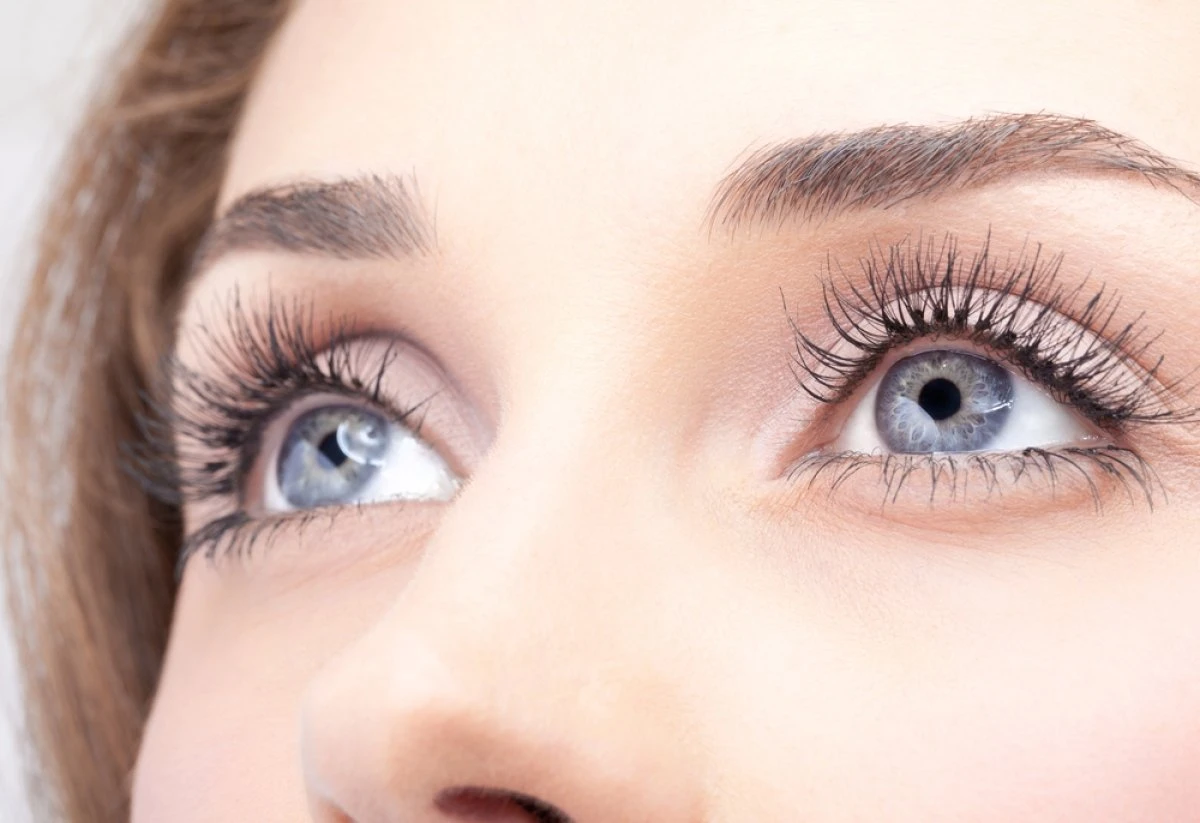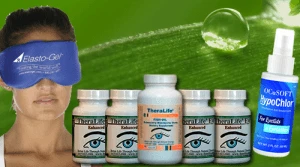Addressing blocked tear ducts and watery eyes involves first identifying the underlying cause. Common culprits include anatomical obstructions, inflammation, infections, and external irritants like smoke or allergens. Start with a thorough eye exam to rule out other conditions. Treatments range from simple interventions like warm compresses and massages to advanced procedures such as surgical dilation, probing, or dacryocystorhinostomy (DCR).
TheraLife’s comprehensive range of products offers natural solutions for various eye conditions, including dry eyes, blepharitis, and uveitis. Their products are designed to enhance eye health by addressing the root causes of discomfort and providing relief from symptoms. For instance, TheraLife‘s eye capsules work to improve the function of tear glands, reducing dryness and irritation. Additionally, their natural anti-inflammatory formulations help alleviate inflammation associated with conditions like uveitis and Sjögren’s syndrome.
TheraLife emphasizes the importance of maintaining hygiene to prevent infections, especially in delicate cases such as infants, where many blockages resolve without intervention. The company also offers guidance on lifestyle and dietary adjustments to support eye health and prevent recurrence of symptoms.
By exploring TheraLife’s natural approaches and products, customers can discover effective techniques for promoting optimal eye health and preventing issues related to blocked tear ducts and watery eyes. Consulting a specialist remains essential for an accurate diagnosis and a tailored treatment plan.
Powerful Treatment To Clear Blocked Tear Ducts and Stop Watery Eyes – TheraLIfe
Root cause of watery eyes is chronic dry eyes. Treat chronic dry eyes with oral treatment from TheraLIfe.
Key Takeaways
- Use warm compresses and gentle massages to promote tear duct drainage.
- Consult a specialist for diagnosis and treatment of persistent watery eyes.
- Antibiotic treatment is essential for resolving tear duct infections.
- Surgical interventions like DCR may be necessary if conservative treatments fail.
- Maintain eyelid hygiene to prevent tear duct blockages and infections.
Understanding Tear Duct Blockages
When tear ducts become blocked, they can lead to a range of noticeable symptoms. You’ll often experience excessive tearing, which is a hallmark indication. Redness of the sclera and recurrent conjunctivitis may also occur.
Painful swelling near the medial canthus, along with crusting of the eyelids, can signal blockage. Mucus or purulent discharge further complicates the condition. Inflammatory responses are significant in these blockages as they often contribute to ocular surface abnormalities.
These symptoms of blockages arise due to various causes of blockages, including anatomical obstructions or inflammation. Such blockages hinder the normal drainage of tears, causing them to accumulate. In some cases, blockages in adults can be due to injury, infection, or rarely, a tumor.
Identifying these symptoms early can facilitate timely intervention and management. Recognizing these clinical signs is essential in determining the next steps for diagnosis and treatment, aiding in the prevention of potential complications.
Common Causes of Watery Eyes
Although often overlooked, watery eyes commonly result from various environmental, age-related, infectious, or systemic causes. Environmental factors such as wind, smoke, and allergens like pollen are potent allergy triggers, leading to reflex hypersecretion of tears. Changes in air quality, particularly dry environments, can exacerbate tear production. Age-related changes, including sagging eyelids and decreased tear quality, impede proper drainage, causing watery eyes. Infections, including conjunctivitis, can obstruct tear ducts, while trauma or surgical complications may lead to scarring and blockage. Systemic conditions like rheumatoid arthritis and Sjögren’s syndrome are known to affect tear production. In babies, blocked tear ducts are a common cause of persistent watery eyes and may require medical intervention. Certain medications and radiotherapy can obstruct tear ducts, and neoplasms within the lacrimal system also contribute to excessive tearing. Meibomian gland dysfunction is linked to dry eye syndrome and chalazion formation, further complicating tear stability and production.
Diagnosing Tear Duct Issues
Identifying and diagnosing tear duct issues requires a systematic approach to determine the underlying cause of watery eyes.
Start by discussing your medical history with your healthcare provider to uncover potential causes impacting tear drainage. A thorough medical eye exam is essential, as it rules out other possible conditions. Early diagnosis can prevent complications such as chronic infections or inflammation, reducing the risk of issues that could impact vision and overall eye health. Identifying conjunctival glands as part of the evaluation can help determine if they are functioning properly, contributing to tear production and preventing dryness.
Diagnostic tests such as the tear drainage test measure how efficiently tears exit your eye. The dye disappearance test further identifies blockages by observing residual dye on your eye surface.
For more detailed assessment, imaging tests like dacryocystograms reveal the blockage’s location and cause. Additional examinations, including nasal and punctal assessments, help identify structural or anatomical issues.
These diagnostic strategies guarantee a thorough evaluation of your tear duct health.
Treatment Options for Blocked Ducts
Addressing blocked tear ducts involves a range of treatments tailored to the specific needs of the patient. Conservative treatments include gentle massage between the eye and nose, applying warm compresses, and maintaining strict hygiene by cleaning discharge with a clean cloth. For infants, observation is often sufficient as blockages may resolve naturally. Antibiotics are prescribed for infections. When conservative methods prove inadequate, surgical options are considered. Dilation, probing, and irrigation involve inserting a probe to clear the duct. Balloon dilation uses a small catheter to widen the duct. Stenting involves placing a silicone tube to maintain openness. Dacryocystorhinostomy (DCR) creates a new drainage pathway. Addressing meibomian gland dysfunction can also be crucial for preventing complications in tear duct blockages. Blocked tear ducts can affect individuals of any age, from newborns to adults, highlighting the importance of addressing symptoms promptly. Each surgical procedure requires careful consideration of risks and potential recovery time.
Preventing Tear Duct Complications
Effective management of blocked tear ducts extends beyond treatment and involves strategies to prevent complications.
Prioritize hygiene practices to minimize the risk of bacterial infections, which can escalate to affecting sinuses and adjacent tissues. Avoid touching your eyes, and promptly address any blockage symptoms to prevent infection. Swollen eyelids often result from allergic reactions, trauma, or infections, and recognizing these causes early can prevent further complications.
Recognize infection signs such as erythema, purulent drainage, and pain. Early intervention is vital; contact healthcare providers immediately if these symptoms occur. Consultation with an eye care specialist is essential for managing tear duct blockages, as self-diagnosis or treatment is discouraged.
Regular eye check-ups can detect issues early, especially in high-risk groups like premature infants or individuals with Down syndrome. Educate caregivers on infection signs and the importance of early action.
For adults, extensive evaluations, including dacryocystography, aid in identifying risks and ensuring appropriate management strategies.
Powerful Treatment To Clear Blocked Tear Ducts and Stop Watery Eyes – TheraLIfe
Root cause of watery eyes is chronic dry eyes. Treat chronic dry eyes with oral treatment from TheraLIfe.
Frequently Asked Questions
Can Blocked Tear Ducts Affect Both Eyes Simultaneously?
Blocked tear ducts can affect both eyes simultaneously, often seen in about 30% of newborns.
You’ll notice excessive tearing and possible redness in both eyes when bilateral involvement occurs. This simultaneous occurrence generally doesn’t complicate the treatment process.
However, in adults, it’s less common and typically linked to systemic conditions or trauma.
Regardless, treatment will focus on the underlying cause and specific symptoms to effectively manage the condition.
Are There Any Home Remedies for Blocked Tear Ducts?
You can employ natural treatments to address blocked tear ducts at home.
Apply warm compresses regularly to the affected area for several minutes, which can help open the duct and improve drainage.
Gently massage the inner corner of your eye near the nose to assist in clearing the blockage.
Maintain cleanliness by using saline solutions to rinse the eyes.
These methods can offer relief and support tear drainage effectively.
How Long Does Recovery From Tear Duct Surgery Take?
Imagine recovery as a journey through a forest, where each step brings you closer to clarity.
The surgery timeline stretches over several stages: immediate recovery spans a week with swelling and vision changes; short-term healing takes 1-2 weeks, requiring rest and elevation; full recovery might take months.
Key recovery tips include following post-operative care, avoiding strain, and attending follow-up visits to guarantee your path to healing is smooth and successful.
Can Allergies Cause Tear Duct Blockages?
Yes, allergies can cause tear duct blockages. When you experience allergy symptoms, inflammation can occur in your nasal passages and extend to the tear ducts, leading to eye irritation.
Swelling and scarring from chronic allergic reactions can obstruct tear drainage, while anatomical changes like polyps physically block tear ducts.
Managing these allergy symptoms with appropriate treatments can reduce eye irritation and help prevent blockages from forming within the tear duct system.
Is It Safe to Fly With Blocked Tear Ducts?
Imagine flying is like sailing through the sky; for those with blocked tear ducts, this journey remains smooth.
Flying safety isn’t compromised by tear duct complications. As air pressure changes, your tear ducts stay unaffected, unlike a boat’s hull in calm waters.
Basic precautions, like keeping your eyes moist and clean, guarantee comfort.
Adhere to follow-up appointments and use prescribed treatments to maintain eye health during travel.
Powerful Treatment To Clear Blocked Tear Ducts and Stop Watery Eyes – TheraLIfe
Root cause of watery eyes is chronic dry eyes. Treat chronic dry eyes with oral treatment from TheraLIfe.
Conclusion
You’ve now unraveled the mystery of tear duct blockages and watery eyes. Like a well-oiled machine, your eyes require clear pathways to function efficiently. TheraLife offers a range of natural products specifically designed to address these issues, ensuring that your eyes remain healthy and comfortable. Their all-natural formulas help alleviate symptoms of dry eyes, blepharitis, and other eye conditions without the use of harsh chemicals or invasive procedures. By choosing TheraLife, you benefit from effective, holistic eye care solutions that enhance tear production and reduce inflammation. With various treatment options available, from supplements to natural remedies, you can restore comfort and clarity while minimizing the risk of future complications. Your vision deserves nothing less, and TheraLife is committed to providing the best care for your eyes.





